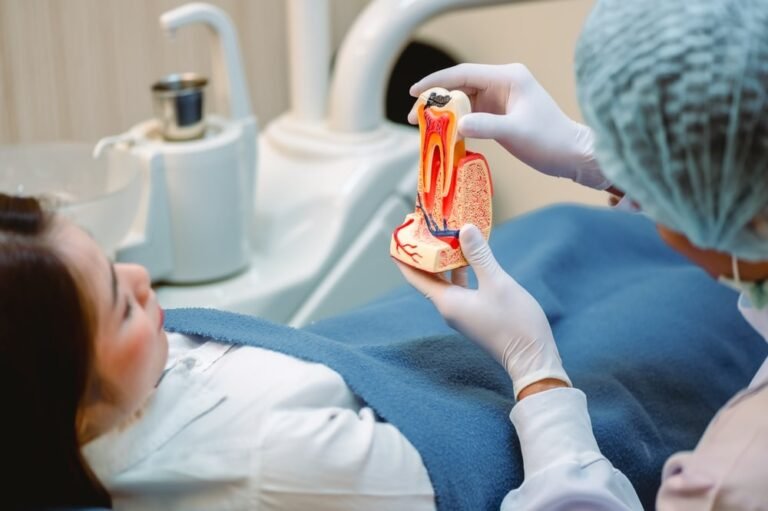If you’re suffering from chronic bad breath, you’ve potentially heard of deep dental cleanings, a.k.a. scaling and root planing. Since the procedure is often abbreviated to SRP, you’ll be forgiven for thinking it’s all one treatment. However, scaling and root planing are two separate steps, each with a different purpose.
To demystify SRP, the Bloor West Village dentist at White Tooth Dental breaks down root planing vs. scaling and what to expect from a dental deep cleaning.
Why Get Scaling and Root Planing?
Regular brushing and flossing are essential but don’t always get rid of every last particle of food or plaque. Some can hide under your gum line in grooves and pockets on your tooth roots. This is often the cause of halitosis, as those particles decay and plaque takes root. As the Cleveland Clinic spells out, long-term halitosis could mean gum disease.
Plaque left on teeth can inflame gums. Caked-on plaque starts a vicious cycle: inflamed gums pull away from teeth, causing pockets where plaque can hide, which further inflames gums. Scaling and root planing treatment gets rid of plaque buildup below the gums and smooths out pockets in teeth where it can flourish.
How Scaling Works
For scaling, our dentist in Bloor West Village uses ultrasonic instruments and manual tools to remove plaque and tartar from the teeth surfaces and beneath the gum line. The goal is to clean the teeth thoroughly to prevent bad breath and halt the progression of gum disease.
You undergo a form of scaling treatment for each teeth cleaning and checkup at White Tooth Dental. However, that kind of scaling doesn’t delve as deeply below the gum line as the scaling done in a dental deep cleaning.
Effectiveness of Scaling
Scaling is highly effective in managing the early stages of gum disease. It helps prevent the earliest form, gingivitis, from progressing into a more serious form called periodontitis. If our Bloor Village dentist thinks you’re prone to halitosis and gum disease, regular scaling can keep your gums healthy and free from infection.
Scaling vs. Root Planing
Root planing is the step that comes after our dentist in Bloor West Village has removed the plaque that causes gum inflammation and bad breath. Your tooth roots are smoothed out to eliminate any crevices or pockets for plaque to set up shop again.
When comparing root planing vs. scaling, think of scaling as treatment and root planing as preventative care—the first part addresses the problem, and the second part ensures that it will never be encountered again.
Steps Involved in Root Planing vs. Scaling
- Exam: We examine your gums and may take X-rays to check for gum disease damage.
- Anesthesia: Local anesthesia is applied to numb the area.
- Scaling: Our Bloor West Village dentist removes plaque and tartar from the tooth roots.
- Root planing: Rough areas on the roots are smoothed out to prevent bacteria buildup.
- Antibiotics: Sometimes, we also provide antibiotic treatments to promote healing.
Get SRP Treatment in Bloor West Village Today
Procedures like root planing and scaling are essential tools in our Bloor West Village dentist’s arsenal. From pesky bad breath to more severe gum disease, SRP is a one-two punch of treatment. If you’re experiencing chronic halitosis or signs of periodontal disease, contact White Tooth Dental today for an appointment.



